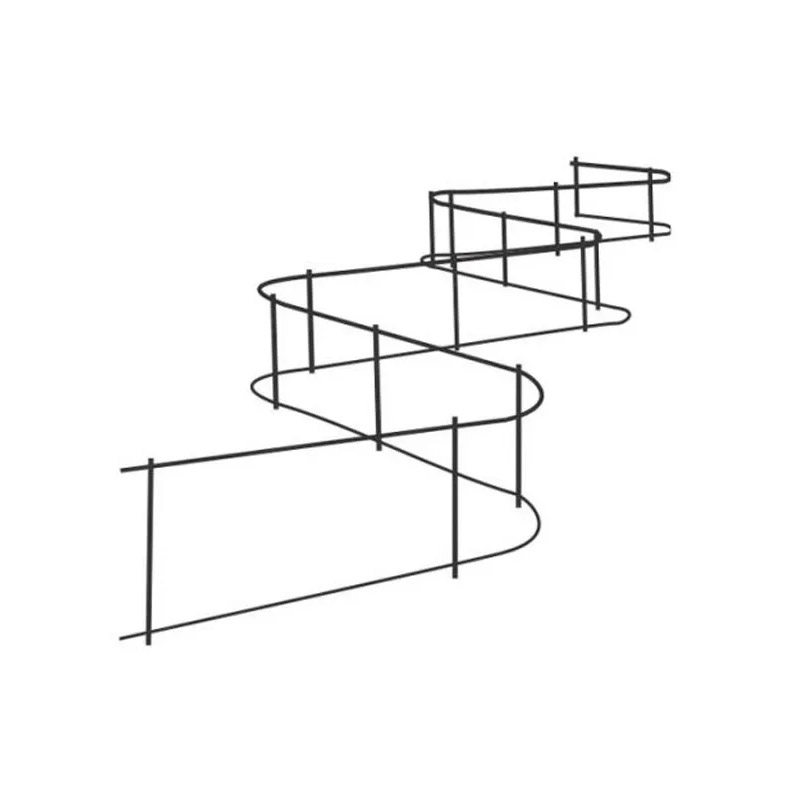
- Mobile Phone
- +8613931874955
- sales@cntcmetal.com
metal wall ties
The Importance of Metal Wall Ties in Construction
In the realm of construction, the integrity and stability of a building are paramount. One crucial element that often goes unnoticed by the average person is the use of wall ties, particularly metal wall ties. These essential components play a significant role in ensuring that masonry walls remain securely attached to their structural framework. As architects and builders strive for both strength and aesthetic appeal, understanding the importance and application of metal wall ties becomes essential.
Metal wall ties are typically made from materials like stainless steel, galvanized steel, or other forms of corrosion-resistant metals. Their primary function is to connect two separate walls, often a cavity wall made of bricks or blocks and a structural frame, which could be made of wood or steel. By doing so, they provide stability and prevent the walls from moving apart due to wind loads or other environmental factors. This connection is critical in maintaining the overall structural integrity of a building, especially in areas prone to severe weather conditions.
There are various types of metal wall ties, such as “tie bars” or “cavity wall ties,” which have distinct designs suitable for different construction needs. Cavity wall ties generally feature a horizontal design that spans between the inner and outer leaves of the wall, allowing for flexibility while providing adequate support. These ties must be installed at specific intervals, depending on the height of the wall and local building codes. Proper installation is crucial, as incorrectly placed ties can lead to serious structural issues, including bowing walls or water penetration.
metal wall ties

One of the major advantages of metal wall ties is their durability. Unlike other materials that may degrade over time, high-quality metal ties offer longevity and resistance to rust, which is particularly important in environments with high moisture levels. This durability minimizes maintenance needs, ultimately saving property owners time and costs associated with repairs.
Another significant aspect of metal wall ties is their role in energy efficiency. By securely tying the outer layer of a wall to the inner structure, these ties help minimize air infiltration, ensuring that buildings maintain temperature. This not only enhances the building's comfort but also contributes to lower energy bills, aligning with the growing emphasis on sustainability in construction.
In recent years, there has also been an increasing trend towards using innovative metal wall tie designs that are lightweight yet maintain strength. The use of advanced materials and manufacturing processes means that builders can provide the necessary support without adding unnecessary weight to the structure. This innovation allows architects greater flexibility in their designs while still adhering to safety and performance standards.
In conclusion, metal wall ties are an indispensable component of modern construction, offering stability, durability, and energy efficiency. As we continue to push the boundaries of architectural design and construction methods, the significance of such foundational elements should not be overlooked. Adequate knowledge about wall ties, including their proper selection, installation, and maintenance, is essential for anyone involved in building or renovating structures. Ultimately, investing in quality metal wall ties is a commitment to the safety, longevity, and performance of our buildings.
share:
-
Wall Ties for Concrete: Invisible Guardians of Building Structural StabilityNewsAug.08,2025
-
Timber Frame Wall Ties: Stable Bonds for Load TransmissionNewsAug.08,2025
-
Stainless Steel Woven Wire Mesh: A versatile material from boundary protection to functional supportNewsAug.08,2025
-
Powder Coat Coil Springs: Creating peace of mind and reliability with sturdy protectionNewsAug.08,2025
-
Floor Standing Sign Holder: A Powerful Assistant for Flexible DisplayNewsAug.08,2025
-
Binding Iron Wire: An Invisible Bond for Building StabilityNewsAug.08,2025
-
Yard Sign Stakes: Reliable Guardians of Outdoor SignsNewsAug.04,2025



















